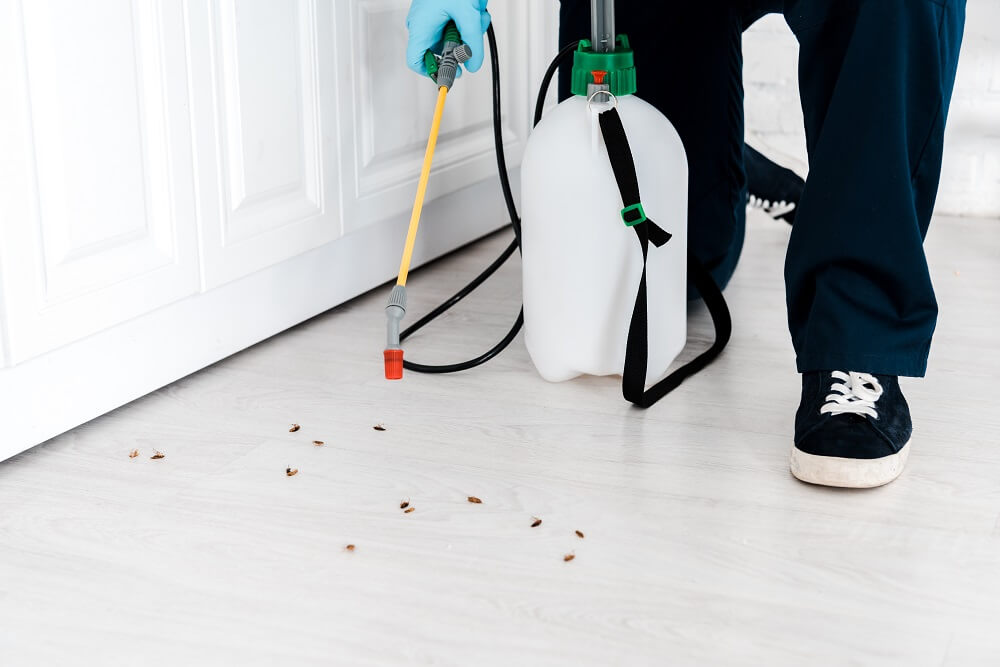Pest Solutions: Pest Control Services Canada & Exterminator
There are many reasons to hire a professional pest control service. One reason is that they have the expertise to identify the pests and the correct products and techniques for getting rid of them.
A good pest control service Canada will also give you advice on ways to avoid pests and help you keep your home a safe place for your family.
1. Pests Can Carry Diseases
Pests are living organisms that cause damage to plants, humans and animals or destroy homes. They can be any plant, vertebrate (such as a rodent or bird), invertebrate (such as an insect or tick), nematode, bacteria, fungus, virus or other unwanted organism that affects human and natural resources.
Insects and other arthropods can carry diseases either through bites, stings, or by physical contact with contaminated surfaces. These diseases can be a source of infections and illness in humans and animals, especially in developing countries.
Bacteria, fungi, protozoans and viruses spread by insect pests are among the most important pathogens that spread disease in our environment. Some of these diseases, like salmonellosis and poliomyelitis, can cause serious illness in people.
Cockroaches and other insects are often a vector for the spread of infection through their bites, flies, or by physical contact with contaminated food or surfaces in the home. They can also transmit a variety of bacterial and viral infections by mechanically ingesting bacteria, fungi or protozoans and then transferring them to the food or surface they are eating.
The Yersinia pestis bacterium, which causes plague in animals and humans, can be transferred to humans through the bite of infected fleas or by the fecal material of infected fleas rubbing into a person’s skin. Plague can be bubonic, septicemic or pneumonic and is characterized by fever, chills, headache, weakness and bleeding into the body’s tissue.
Other common diseases that are carried by arthropods include leprosy, cholera and typhoid fever. In some areas, these infections are a major health problem, and can cause death.
Agriculturaland horticultural crops are also attacked by a variety of pests, some of which are damaging to the plants themselves. Insects, mites and nematodes can damage plants and reduce crop yields or quality, and can also be a cause of plant disease.
Insects are a significant source of disease in the United States and are responsible for many cases of Zika, Yellow Fever and Malaria. They can also spread Lyme disease and Rocky Mountain spotted fever. Some of these pests are invasive and have no natural enemies.
2. Pests Can Damage Your Property
Pests are a common problem in many homes. They can be hard to get rid of, and they can cause a lot of damage.
In addition to causing health issues, pests can also lower the value of your property. This can be a big deal when you're looking to sell your home or just want to keep your property in good condition.
It's important to take steps to prevent pests from entering your home, though. One of the best ways to do this is by making sure your house is properly sealed. This means putting foam liner on the frames of your doors and windows. Another way is to make sure your home is free of cracks and gaps in its structure, like in the walls or around the foundation.
Termites, Longhorned Beetles, Emerald Ash Borers, and ants can all eat through wood and damage the structural integrity of your home. Leaving these pests unchecked can result in major structural failure of your home, which could end up lowering your resale value.
These pests can also contaminate your food, and they can carry diseases and other pathogens to you, your family, and your pets. These infections can affect your health in a number of ways, including gastrointestinal upset and respiratory problems.
While most homeowners think of pests as a nuisance, they're actually very dangerous and can be a real threat to your home's health and safety. For example, ants can bite and sting people, and they can transmit diseases to them.
Rats and mice can also damage electrical cords, which can lead to costly repairs or a fire. This is especially true if you live in an area that has a high amount of electrical activity.
Pests can also make your house smell, which is bad for resale value. In addition, pests can leave a greasy residue on your walls and floors that makes your property appear dirty.
A pest infestation can also lower the value of your home if it is discovered during an inspection. This can be a big problem, especially if you are planning to sell your home or are in the process of renovating it.
3. Pests Can Infest Your Food
When pests infest a home, the first thing they do is take aim at food. Whether they're sneaking in through small openings, finding their way into food items in the back of the pantry or contaminating packaged goods from a grocery store, pests don't have to do much work to get your food.
Insects that infest stored foods include flour beetles, cigarette and drugstore beetles, grain beetles, Indian meal moths, rice weevils, fruit flies, and others. Some of these pests are more common than others.
Some insects that infest stored foods can be very tiny, so they're hard to find when you see them. Look for silk webbing, cast skins or eggs that've been damaged on cereals, grains, dried fruits, dry meats, fish, pasta and other food items.
If you notice that an item is infested, discard it immediately. To help prevent infestation, keep food items tightly sealed in airtight containers or jars and thoroughly clean the storage area.
These methods are especially important if you have kids or pets. If your food is infested, it could be a breeding ground for harmful insects and diseases.
In addition, contaminated food can cause you to become sick with bacteria such as salmonella. This bacteria can lead to a variety of illnesses including stomach ulcers, ear infections and kidney problems.
The most common pests that infest food in a home are grain beetles, Indian meal moths and carpet beetles (dermestids). These bugs are small, so they can hide away in dark or moist areas.
They also have silky, hairy wings that give them a fuzzy appearance. They eat a variety of foods, including grain, cereals, flour, bread, dried fruit and nuts.
Aside from eating, grain beetles and Indian meal moths can also contaminate your food with their waste. Their droppings and shed skins can transfer germs that can make you sick, so it's best to toss infested foods as soon as possible.
Other common pests that can affect your food are cockroaches and silverfish. These creatures are notorious for transferring germs onto foods, food preparation surfaces and customers' clothing. They can spread diseases such as cholera, dysentery and rotavirus. They can also damage your family business's reputation.
4. Pests Can Make You Sick
Pests are organisms living and growing where they do not want to be, causing damage to plants, animals, humans or structures. They include weeds, insects, mites, bacteria, fungi, pathogens, and other microorganisms that threaten human health and the environment.
Not all organisms are pests, however. Some are considered beneficial, like honeybees and spiders that pollinate crops. Others are considered harmful, such as mosquitoes, flies and ticks that spread diseases.
A pest is an organism that may affect human health, damage plants or animals and contaminate food products. These can include insects, rodents, weeds and fungi, and other microorganisms that are damaging the natural ecosystem, including our agriculture, forests, beaches, and wildlands.
Some pests can be harmful to your health, while other pests may just be a nuisance. A good way to decide whether a pest is harmful or not is to identify its habits, and learn about how the pest affects humans, animals, or buildings.
For example, cockroaches can cause asthma and allergies in many people because of their shedding body parts, saliva and feces. They also spread harmful bacteria such as salmonella and E. coli, and they can spread a disease called leptospirosis.
Rats are also harmful to human health and can cause a variety of illnesses such as dysentery, leprosy and cholera. They can infest homes through small holes and cracks in the foundations, walls, and floors, as well as through food sources and stored products.
Other pests that can cause a variety of diseases include mosquitoes, flies, ticks and fleas. Mosquitoes can carry the Zika virus, yellow fever, and malaria; flies can spread Rocky Mountain spotted fever; and ticks can spread Lyme disease.
Rodents can carry a variety of diseases and are responsible for many home fires. They can also bring into your home the bacterial diseases leptospirosis, murine typhus and trichinosis.






Comments
Post a Comment